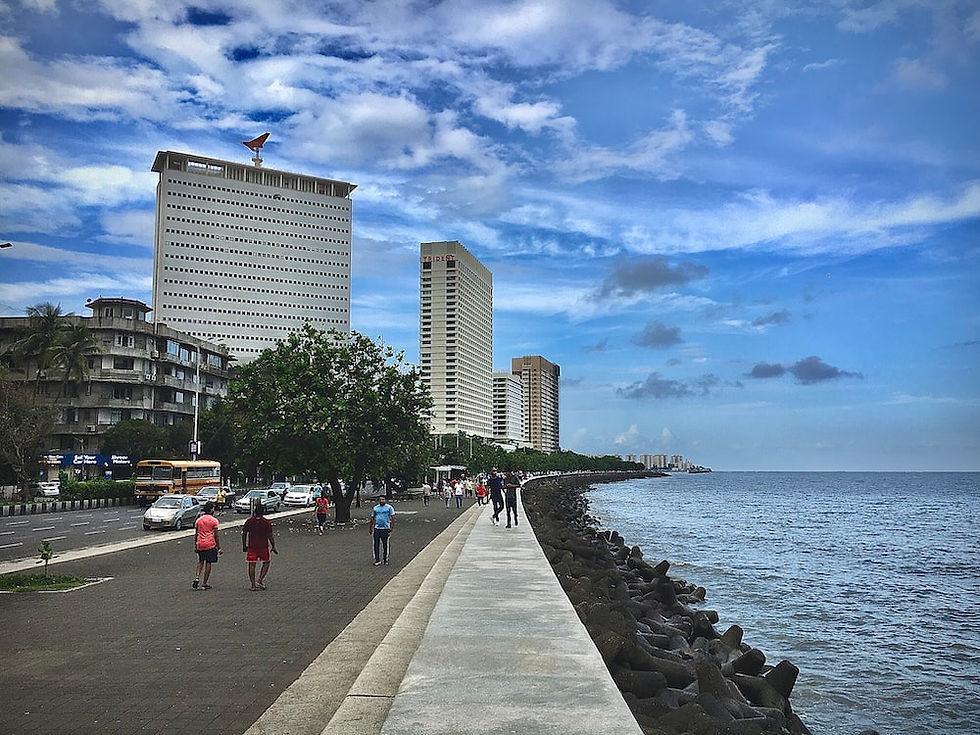Mumbai - The Hub of Migration
- surjatopadas96
- Sep 19, 2022
- 4 min read
Updated: Jun 26, 2023

Mumbai, a city where everyone believes dreams come true, was once made up of seven marshy islands off the west coast of the subcontinent of India, and was originally inhabited by fishermen, known as kolis. The islands were ruled by the Silahara Hindu rulers of Puri (810-1260 CE), who also built the city’s medieval Walkeshwar temple complex. It appears the islands became part of the maritime trading network of the north Konkan ports that the Silaharas controlled. This overseas trade brought in a floating population of traders and seafarers, including Hindus, Muslims, Arabs, Persians and Jews.
Prosperity came, and since then, Bombay has been a magnet for migrants, from the arrival of the Arabs of the Gujarat sultanate in 1348, to the Portuguese in 1534 who became the Roman Catholic converters of large swathes of Mumbai’s population, to the English in 1661.
Everyone came to Bombay — from the Gujarati-speaking trading and artisan communities to the Parsis (weavers, shipbuilders, carpenters, brokers), Bohri, Khoja, and Kutchi Bhatias. By the 18th century other communities, like the Bene-Israel Jews from the mainland Konkan, Baghdadi Jewish and Armenian traders from Surat, West Asia and Armenia respectively, made Bombay their home. These communities were largely seeking Bombay out for work (Bene-Israel), a refuge from persecution (like the Baghdadi Jews from West Asia), and from drought and political instability.
By the mid-19th century, Bombay became a major trading hub and port in India, second only to Calcutta (now Kolkata). By the time India got independence in 1947, Bombay was the financial capital of India and more than 50% of its population was made up of migrants.
The story of Mumbai and migration revolves around three sets of laws: laws related to housing –rent control, slum rehabilitation etc.; Company and Industrial laws; and Criminal laws – anti-trafficking, anti-terrorist and organized crime.
Mumbai's urban population is estimated to be over 22 million, and the densely populated city is the largest in India in terms of population, trade activity and business. The metropolitan area has
experienced an explosion in growth over the past 20 years, a common occurrence with metropolitan areas in India. The rapid population growth is attributed to migration from other regions in the country,
with migrants seeking business and employment opportunities.
The increment of desires plays an ideal factor in migration to Mumbai. There are two factors which lead to migration. They are:-
a) Pull Factor:- The vision of people towards Mumbai leads them to move on from their origin place to Mumbai. People think being in Mumbai will help them to seek the best variety of jobs they are looking for but in the end, if due to the huge play of competition people can come up with their expectations.
b) Push Factors:- Due to the lack of opportunities in their present living area, people can full fill their basic desires. As a human, we always have a tendency towards better increment in life. So Mumbai being the hub of all kinds of occupation leads to a huge flow in of people.
According to the estimates based on the 1999-2000 NSS survey, migrants constitute about 37 per cent of the Mumbai population. There has been an increase in female migration in recent years compared to male migration. About 75 per cent of the migrants originate from rural areas compared to 23 per cent from urban areas. The migrants from Maharashtra state in which Mumbai is located constitute about 43 per cent of the city's population according to the survey. Migration from other states, mostly Uttar Pradesh and Bihar, has increased over the last two decades. The neighbouring state of Gujarat which once used to dominate the migration streams to Mumbai showed a considerable decline in the rate of migration during the recent period due to the decline in the business of the Gujarati communities in the city. The influx of population from rural areas of other states to Mumbai shows an increase of about 10 per cent. International migrants constitute about one per cent of the total migrants.
The economic factors have been the major reasons for migration to Mumbai among males. About 69 per cent of males stated that employment was the main motive behind their movement. The data show that the rate of migrants in search of better employment has been higher in the late 1990s. Social reasons such as marriage and accompanying the family constituted about 90 per cent of female migration. The employment opportunities in Mumbai have shown fluctuating trends over the last two decades. About 86 per cent of the male migrants were reported as employed in early
In the 1980s comparison to 53 per cent of males, non-migrants were. During the late 1990s, the level of employment of male migrants showed a decline while that of the non-migrants increased. The unemployment level was about two times higher among non-migrants than migrants. The unemployment rates for migrants and non-migrants show that it increases with a higher level of education. Non-migrant females showed a higher level of employment compared to migrant females.
It is difficult to know, based on NSS data, whether the gains of the migrants are higher than their non-migrant counterparts in terms of occupational differences. What the data suggest is that the occupational pattern for both migrants and non-migrants have largely remained unchanged over the last two decades. During this period, however, there has been a rapid increase in Mumbai’s population, much of which has been contributed by the natural growth itself. The increased population of both migrants and non-migrants can only be managed with the expansion of industrial, regional and rural development. It is not the migration per se that has caused the problem for an expanding metropolis like Mumbai, rather it is the lack of appropriate policy of integrated development which is a matter of concern.

Comments